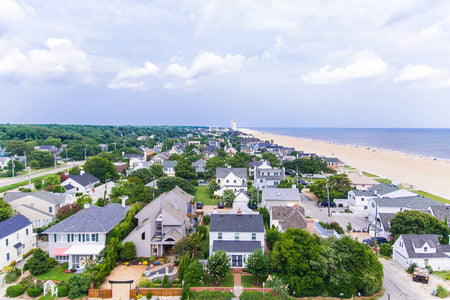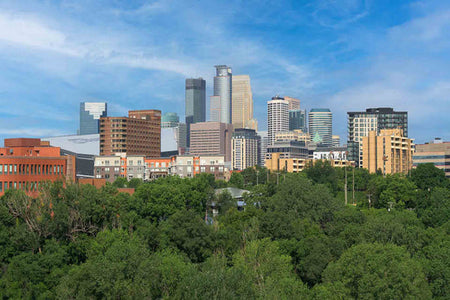- Allergy season in California differs across regions due to its diverse climates and plant life.
- The worst allergy months vary by region but typically include March to May (tree pollen), June to August (grass pollen), and September to November (weed pollen).
- Preparation tips include monitoring local pollen counts and starting allergy medications early for proactive management.
California’s mix of climates and plant life makes allergies different depending on where you are in the state. In Northern California, with its big oak trees, and down in Southern California, with sunny beaches, allergy seasons don’t all happen at the same time.
Different plants like trees, grasses, and weeds release pollen at various times of the year, which makes allergies tricky to handle for people living in different regions.
This article explains when is allergy season in California, which months are toughest for allergies, and how you can get ready.
When is Allergy Season in California?
Allergy season in California varies by region with different peak times for tree, grass, and weed pollen.
When is Allergy Season in Northern California?
In Northern California, tree pollen from oaks, pines, and junipers emerges as early as February and peaks in spring, while grass pollen dominates from late spring through early summer, and weed pollen, such as ragweed, peaks from August to October, especially in coastal areas.
When is Allergy Season in Central California?
Central California, including the Bay Area and Central Valley, has tree pollen peaking from March to May, grass pollen in late spring and summer, and weed pollen from August to October, with coastal areas experiencing longer pollen presence. Higher humidity levels can lead to more vigorous plant growth, which increases pollen output.
When is Allergy Season in Southern California?
Southern California’s warm climate extends the allergy season nearly year-round, with tree pollen starting as early as February and peaking in spring, grass pollen continuing from April through September, and weed pollen peaking from August to October, although milder winters allow for some year-round pollen presence.
In desert areas, like Palm Springs, tree pollen peaks in early spring, grass pollen in late spring, and weed pollen from September to October, though the extreme heat limits the duration and intensity of the allergy season compared to coastal and valley regions.
What are the Worst Months for Allergies in California?
The worst months for allergies in California vary by specific allergens prevalent during each season. Here’s a general overview:
- Spring (March to May). March through April is the peak season for tree pollen, particularly from oak, cedar, and pine trees. By late April and May, grass pollen levels begin to rise, particularly from Bermuda grass.
- Summer (June to August). Grass pollen remains an issue during the summer months, especially in warmer regions. Late summer, particularly in August, marks the start of weed pollen season, with ragweed being a significant contributor.
- Fall (September to November). September through November sees high levels of weed pollen, particularly from ragweed and sagebrush. Fall can also bring increased mold spores, especially after autumn rains.
- Winter (December to February). While outdoor allergens are generally lower, indoor allergens like dust mites and mold can still be problematic due to people spending more time indoors.
When Does Allergy Season End in California?
Allergy season in California generally winds down in late fall, but this can vary by region.
In Northern California, allergy season typically ends around late April as tree pollen levels (particularly from species such as oak, cedar, and pine) decline, but then grass pollen season begins. In late fall and winter months, most trees and grasses are dormant.
In Central California, the allergy season may extend into early June. As tree pollen levels decline, grass pollen becomes more prevalent during this time.
Southern California often sees a longer allergy season, with weed pollen lingering into November, particularly in warmer areas. Species such as ragweed and sagebrush, become significant.
While pollen is present throughout much of the year in California, levels significantly decrease during the late fall and winter months. Primary contributors to pollen — such as trees like oak, cedar, and various grasses — are not actively releasing pollen. This is especially true in the Northern and Central regions.
Southern California may still have some residual pollen, although at reduced levels compared to other seasons.
Common Allergens in California
Here are some of the most common allergens found throughout the state:
- Oak
- Cedar
- Pine
- Birch
- Bermuda grass
- Rye grass
- Ragweed
- Sagebrush
- Russian thistle (tumbleweed)
- Dust mites
- Mold spores
How to Prepare for California Allergy Season
The key to preparing for allergy season in California is creating habits that reduce your exposure to allergens. This includes simple steps like monitoring pollen counts and mitigating symptoms by starting allergy medications early. Learn more below:
- Keep an eye on local pollen counts to know when levels are high. Pollen counts measure the amount of pollen in the air on a given day. High pollen counts mean there is more pollen circulating, which can trigger allergy symptoms [*].
- Stay indoors on days with high pollen levels, especially during peak times, typically in the morning and early evening. Limiting your outdoor activities during these hours reduces your chances of inhaling pollen.
- Consider the approach called "allergy pretreatment." It means starting your allergy medicine early, which helps prevent symptoms before they start. It’s a helpful way to manage seasonal allergies. Allermi nasal spray, a combination spray, can be part of this strategy. It’s different from regular nasal sprays in that it combines multiple active ingredients and can be adjusted over time to meet changing needs.
- On days with low pollen counts, you can open windows to let in fresh air. However, during high pollen seasons, especially in the morning and early evening when pollen levels are at their highest, it’s best to keep them shut to minimize exposure.
- Use HEPA (High-Efficiency Particulate Air) filters to trap allergens and improve indoor air quality. A study monitoring indoor air quality in households with children suffering from asthma found that using HEPA filters led to substantial reductions in particulate matter, thereby improving respiratory health [*].
- Wearing a mask and sunglasses when you go outside can help protect you from pollen and reduce allergy symptoms. A mask acts as a barrier to filter out pollen particles while sunglasses help prevent irritation.
- After being outside, it’s important to shower and change your clothes to help remove pollen and other allergens that may have settled on your skin and clothing.
- Dust surfaces at least once a week using a damp cloth to avoid spreading dust into the air. Vacuum carpets and rugs weekly with a vacuum that has a HEPA filter. Additionally, wash your beddings every one to two weeks in hot water to kill dust mites.
- Regular baths help reduce pet dander, saliva, and urine from your pet's fur, which are common allergens. Regular grooming — like brushing — also helps minimize shedding and dander.
By following these steps, you can create a cleaner, more allergen-free environment in your home, and reduce the impact of seasonal allergies during peak seasons in California.
The Bottom Line
Living with allergies in California can be hard because the climate and plants are so different everywhere. Thankfully, you can manage your allergies better by knowing when pollen levels are high and making small changes in your routine.
This way, you can appreciate all that California has to offer without letting allergies stop you. Starting allergy medications early or using Allermi nasal spray, can also help keep your symptoms in check.
References:
- Pollen Counts Defined | AAAAI. (n.d.). https://www.aaaai.org/tools-for-the-public/allergy,-asthma-immunology-glossary/pollen-counts-defined
- Vijayan, V. K., Paramesh, H., Salvi, S. S., & Dalal, A. A. (2015). Enhancing indoor air quality -The air filter advantage. Lung India : official organ of Indian Chest Society, 32(5), 473–479. https://doi.org/10.4103/0970-2113.164174










